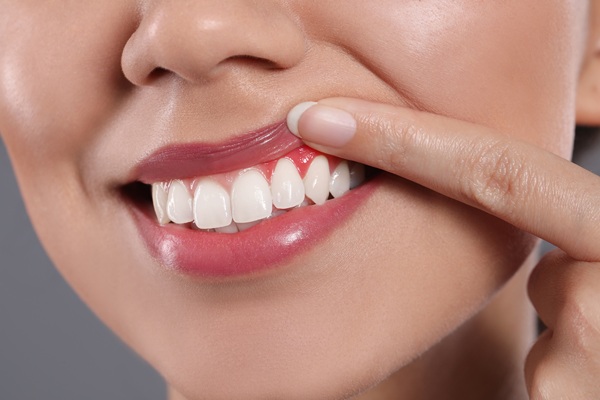How a General Dentist Uses Periodontics to Save Your Smile

Periodontics, the branch of dentistry focused on the health of the gums and supporting structures of the teeth, plays a vital role in preserving your smile. By addressing gum disease, maintaining healthy gums, and protecting the foundation of your teeth, periodontics allows general dentists to prevent and treat conditions that can lead to tooth loss and other oral health complications.
The importance of healthy gums
Healthy gums are essential for a strong, beautiful smile. They provide the foundation for your teeth and act as a barrier against bacteria and inflammation. However, gum disease is a common issue that can compromise this foundation. Periodontics enables dentists to detect, treat, and manage gum disease at every stage.
The most common form of gum disease is gingivitis, characterized by red, swollen gums that may bleed during brushing or flossing. If left untreated, gingivitis can progress to periodontitis, a more severe condition that affects the bone and connective tissues supporting the teeth.
Non-surgical periodontic treatments
The first line of defense against gum disease often involves non-surgical periodontic treatments. These include:
1. Scaling and root planing
Scaling and root planing, or deep cleaning, is designed to remove plaque and tartar buildup below the gumline. Scaling eliminates the bacteria-laden deposits, while root planing smooths the tooth roots to help the gums reattach and heal. This treatment is particularly effective for early to moderate periodontitis and helps prevent the condition from worsening.
2. Antibiotic therapy
Antibiotics may be used in conjunction with scaling and root planing to target bacterial infections. These medications can be applied directly to the affected areas or prescribed in oral form, depending on the severity of the infection.
3. Maintenance cleanings
After initial treatment, regular periodontal maintenance cleanings are crucial. These cleanings are more thorough than standard dental cleanings and help prevent the recurrence of gum disease by targeting areas prone to plaque accumulation.
Surgical periodontic treatments
For advanced cases of gum disease, surgical interventions may be necessary. General dentists trained in periodontics can perform or coordinate treatments such as:
1. Gum grafting
When gum recession exposes the roots of teeth, gum grafting can restore lost tissue and protect the teeth from further damage. This procedure improves aesthetics and reduces sensitivity.
2. Pocket reduction surgery
This treatment involves reducing the depth of periodontal pockets to eliminate bacteria and allow the gums to heal. By minimizing pockets, dentists help prevent further bone and tissue loss.
3. Bone grafting
Bone grafting may be required to rebuild areas where gum disease has caused significant bone loss. This procedure supports the stability of teeth and prepares the jaw for restorative treatments, such as dental implants.
Periodontics can preserve smiles
Periodontics is about treating gum disease and preserving the aesthetic and functional aspects of your smile. Healthy gums enhance the appearance of your teeth and contribute to overall oral health. By integrating periodontic treatments into their practice, general dentists provide comprehensive care that addresses all aspects of your smile.
Get periodontics treatment from a general dentist today
Periodontics is a critical tool for general dentists in the fight against gum disease and tooth loss. If you are experiencing symptoms of gum disease, such as bleeding gums or gum recession, schedule an appointment to discuss how periodontics can protect your oral health. Early intervention can save your smile and prevent complications in the future. For more information, schedule a consultation visit today at Bella Dental Center.
Request an appointment here: https://belladental.us or call Bella Dental Center at (818) 350-8133 for an appointment in our North Hills office.
Check out what others are saying about our dental services on Yelp: Periodontics in North Hills, CA.
Related Posts
A porcelain fixed bridge is outstanding as a dental restoration that can replicate the appearance and function of natural teeth. The dental bridge is an option to consider when seeking to replace one or multiple teeth that are damaged or lost. A dentist can design the porcelain fixed bridge to mimic the look of natural…
Patients with dental implants often have questions about the affixed implant crown. Dental implants are ideal for replacing lost tooth roots, and crowns are crucial for helping you get your desired smile. One common query that dentists deal with is the possibility of replacing the dental crown on the implant.Patients will have a better knowledge…
A general dentist can help if you find yourself dealing with tooth pain. As uncomfortable as these sensations can be, they are your body’s way of letting you know something is wrong. It is typically one of the last symptoms of unaddressed dental issues to show up.Some of the reasons why you might experience toothaches…
Bad breath can feel uncomfortable and embarrassing, even more so when it does not seem to go away. If you are struggling with chronic bad breath, a general dentist can help. Many treatment options are available, some of which take place at home. In this article, we will explore the common causes of bad breath…
